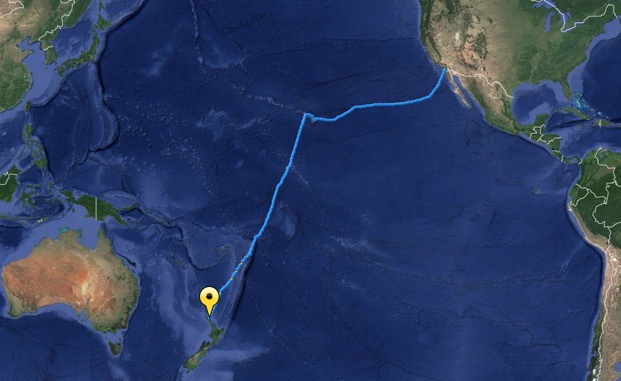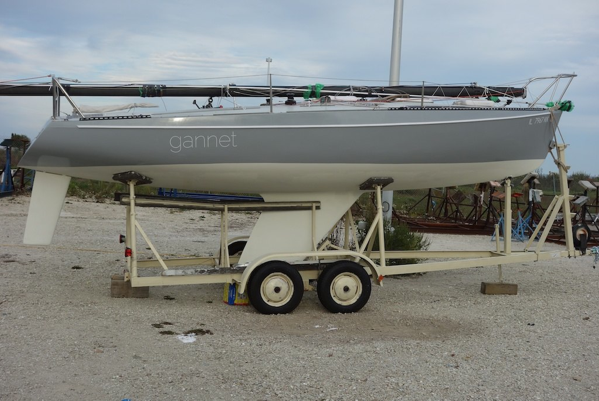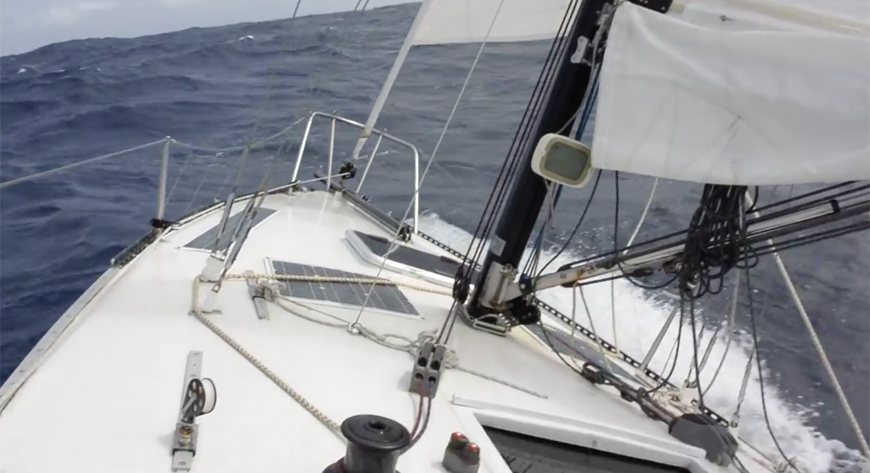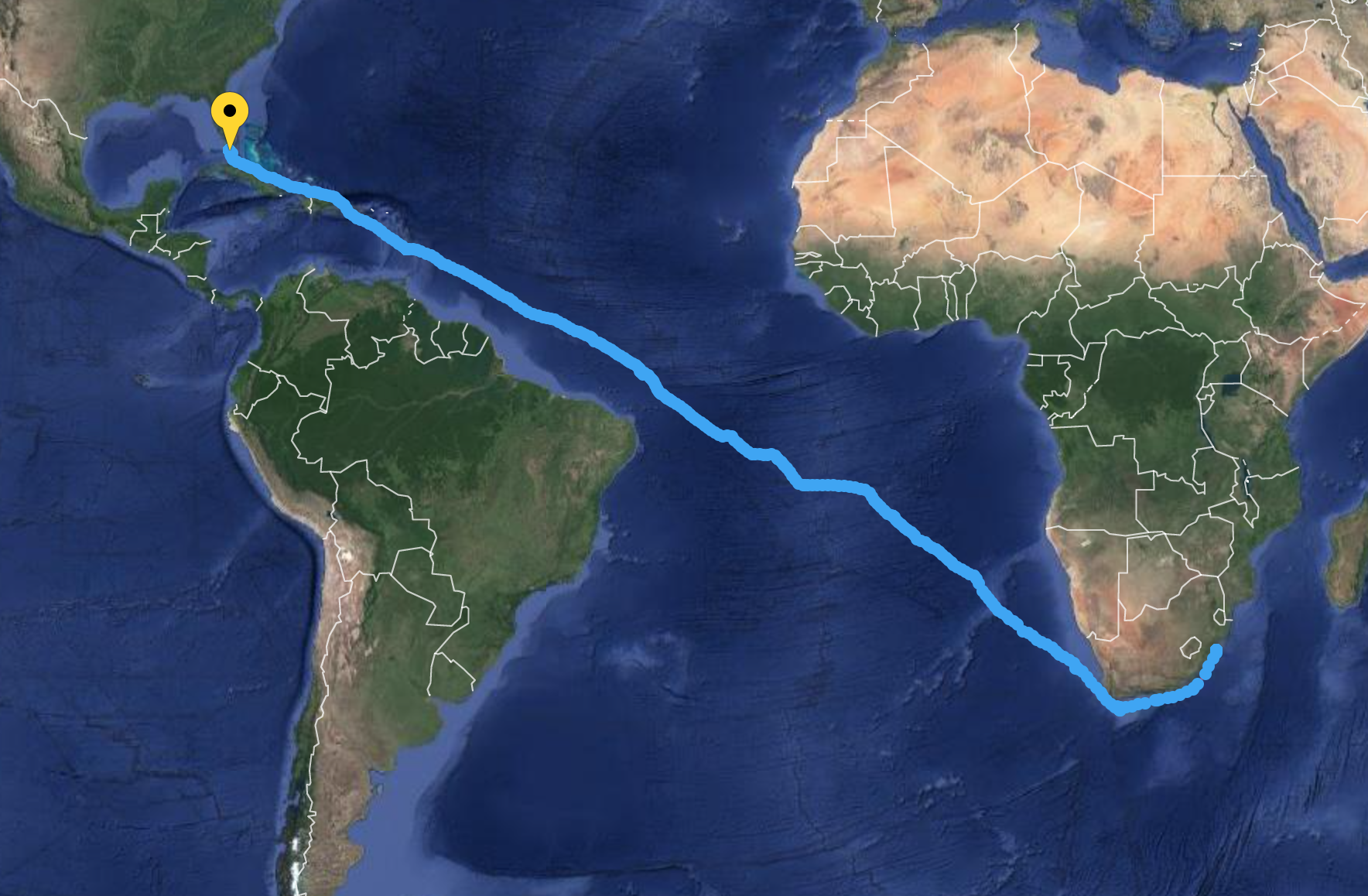Some of you know that GANNET, hull number 40, crossed the Pacific Ocean this year from San Diego to Opua, New Zealand, 6,400 miles as measured by straight line noon to noon positions, in five passages and a day under four months. I’ve written about this online and for CRUISING WORLD, but thought that my fellow Moore owners and sailors might have particular interest in my experience and conclusions about the boat.
First, I sail GANNET differently than you do. I expect that most of you most of the time are trying to go as fast as possible, while I am often deliberately slowing GANNET down: to avoid entering a harbor at night; for damage control, as when she repeatedly goes airborne off waves and crash lands on the other side; and sometimes just to make conditions more bearable for me. Life aboard becomes increasingly difficult at angles of heel greater than 20° and decidedly unpleasant at more than 30°.
I acknowledge that to some extent I am misusing hull number 40. Moore 24s are sprinters, even those raced to Hawaii. And I am pacing GANNET to sail a marathon.
Living aboard GANNET in what I am pleased to call her Great Cabin has been an interesting and ultimately satisfying exercise in problem solving. I am presently back in the midwestern flatlands spending time with Carol, my wife, but I lived aboard GANNET continuously for six months. While I ate some meals ashore in port, GANNET was my home for all that time and I didn’t spend a single night ashore. I can fit every important part of my life—except Carol—into GANNET, and she doesn’t want to fit there anyway: sailing, reading, writing, taking photographs, listening to music. I could live aboard her indefinitely, and, at least by my standards, live well. This, to those of you who know Moore 24s, might seem a greater accomplishment than crossing an ocean.
Four things have most impressed me about GANNET.
Acceleration. She is sailing along at 6 or 7 knots, catches a wave, even a small wave, or a gust of wind, even a small gust, and instantly is doing 9 or 10 knots. And she runs true, even steered by tiller pilot.
The maximum speed I have observed has been 12.4 knots. I expect that all of you have seen higher. But while hand-steering down twelve to fifteen foot waves in a gale off New Zealand, often I couldn’t read the mast mounted Velocitek through rain, and even more often I was looking at the ocean not the Velocitek, so I don’t know how fast she might have gone.
Quickness of motion. I don’t get sea sick, and I have never before on bigger boats or smaller, not even after a passage five months long, felt the ground move when I step ashore. After sailing GANNET, the ground moves.
GANNET is wet. I knew that she would be. Going to windward in more than twenty knots, when she is not airborne, she is a submarine. I sailed even a wetter boat without a deck most of the way around the world. But GANNET is wet.
Everything that can be damaged by water is stored in waterproof containers, except me and I have good foul weather gear.
I am filled with admiration and respect for Buzz Ballenger and Ron Moore and those who work and worked with them.
Buzz Ballenger made a semi-custom mast and boom for GANNET, stiffer than standard. GANNET also has one-size larger than standard rigging. And at Buzz’s suggestion when I emailed him from Honolulu about sailing the boat under jib alone, she has running backstays. Everything has held together despite prolonged stress, and I have never observed the mast pumping.
When Ron Moore and his people were laying up hull number 40 in 1979, they could never have imagined that she would cross the Pacific Ocean. Yet honor and justifiable pride in their craftsmanship caused them to build her well enough to do so.
I have not hauled GANNET since she arrived in New Zealand in September. I plan to do so when I return next year, a return that may be delayed by shoulder surgery. But I have seen no indication that she has sustained any structural damage. Anti-foul. Re-provision. Carry on another armful of tiller pilots. And she will be ready to go.
I’m the one who has sustained structural damage.
I use words carefully, which puts me at a disadvantage in our Age of Hype. I particularly do not use ‘great’ loosely. But sometimes designers and builders just get it right—and I note that George Olsen and Ron Moore are often listed as co-designers. With the Moore 24 they did. GANNET is a great boat.
But you already knew that.











Show Comments (0)